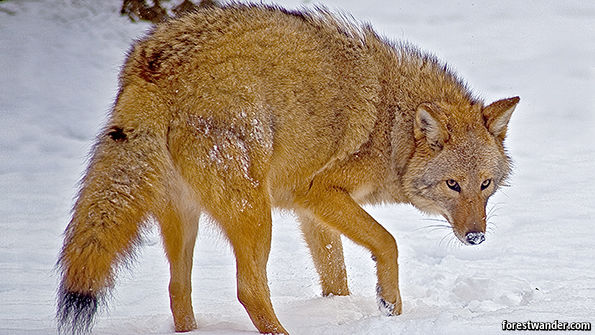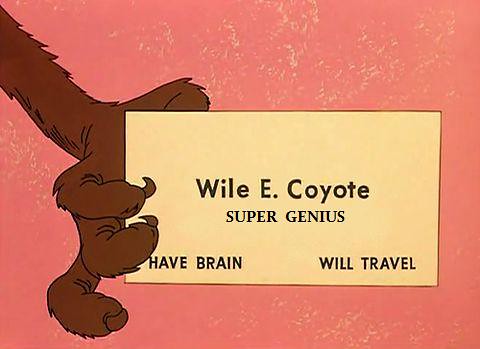General Discussion
Related: Editorials & Other Articles, Issue Forums, Alliance Forums, Region ForumsIt is rare for a new animal species to emerge in front of scientistsí eyes.
But this seems to be happening in eastern North America.
http://www.economist.com/news/science-and-technology/21677188-it-rare-new-animal-species-emerge-front-scientists-eyes
Interbreeding between animal species usually leads to offspring less vigorous than either parent—if they survive at all. But the combination of wolf, coyote and dog DNA that resulted from this reproductive necessity generated an exception. The consequence has been booming numbers of an extraordinarily fit new animal (see picture) spreading through the eastern part of North America. Some call this creature the eastern coyote. Others, though, have dubbed it the “coywolf”. Whatever name it goes by, Roland Kays of North Carolina State University, in Raleigh, reckons it now numbers in the millions.
The mixing of genes that has created the coywolf has been more rapid, pervasive and transformational than many once thought. Javier Monzón, who worked until recently at Stony Brook University in New York state (he is now at Pepperdine University, in California) studied the genetic make-up of 437 of the animals, in ten north-eastern states plus Ontario. He worked out that, though coyote DNA dominates, a tenth of the average coywolf’s genetic material is dog and a quarter is wolf.
The DNA from both wolves and dogs (the latter mostly large breeds, like Doberman Pinschers and German Shepherds), brings big advantages, says Dr Kays. At 25kg or more, many coywolves have twice the heft of purebred coyotes. With larger jaws, more muscle and faster legs, individual coywolves can take down small deer. A pack of them can even kill a moose.

Scootaloo
(25,699 posts)It helps if you abandon the platonic ideals of species. Genetics simply doesn't support such isolated purity.
Wolves, dogs (and dingoes), coyotes, and golden jackals are not four independent species. They are in fact one very widely-distributed genetic complex. A super-species, if you want to use such terms. There's lots of gradients between these four in populations where they overlap. Sometimes these overlap populations are even thought of as separate species (especially in the case of the "red wolf."![]()
"Species" is very plastic, and malleable, and the "higher dogs" are a wonderful example of that - certainly more relatable than herring gulls in the arctic, I suppose.
This is part of why "endangered species" legislation, while well-intended, might not be the best way to go. We've already seen efforts to de-list the red wolf, now that we know it's a relict wolf-coyote hybrid population and not a "platonic" species. We treat it as if they were specimens in a museum; "Well, we already have wolves, we already have coyotes, I guess we don't need this wolf-coyote thing." A far superior approach to species-by-species listing and de-listing, is an ecological examination of populations. A landscape that developed with wolves as the top predator is going to be much healthier with genetically "impure" coy-dog-wolf-things, than it would be with no apex predator at all. And for that reason, the animals need the protection, not because they're zoo specimens, but because they function in the ecology.
hifiguy
(33,688 posts)very tough and adaptable species and these critters are getting the best of all of them. Can't say I am surprised.

bvar22
(39,909 posts)produces a Mule...which in many ways is superior to either species.
The offspring (Mule) is sterile. It can't reproduce, but it can WORK its ass off,
and are much smarter than most people give them credit for.
My grandfather plowed with Mules on his farm.
At the end of the day, he would unhitch the mules and walk them back to their barn.
The next morning, the mule team would be out at the plow, standing in their traces, ready to be hitched up.
My grandfather was a kind man, and all the critters loved him.